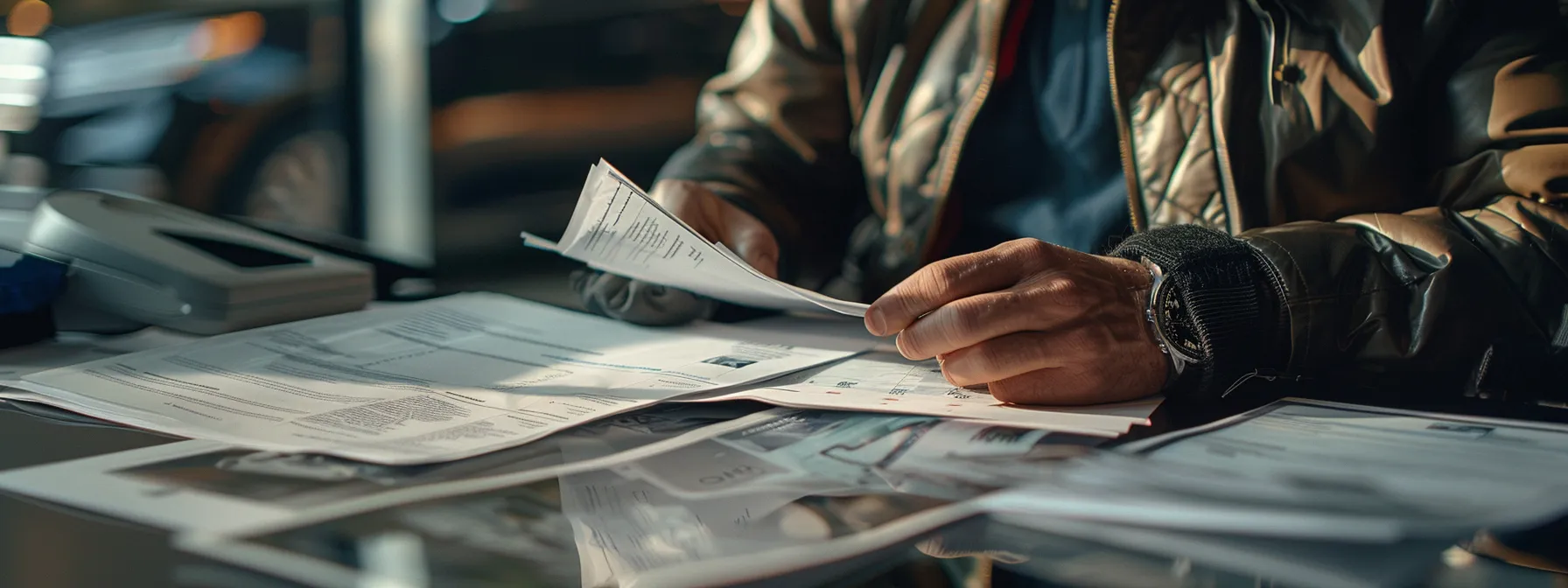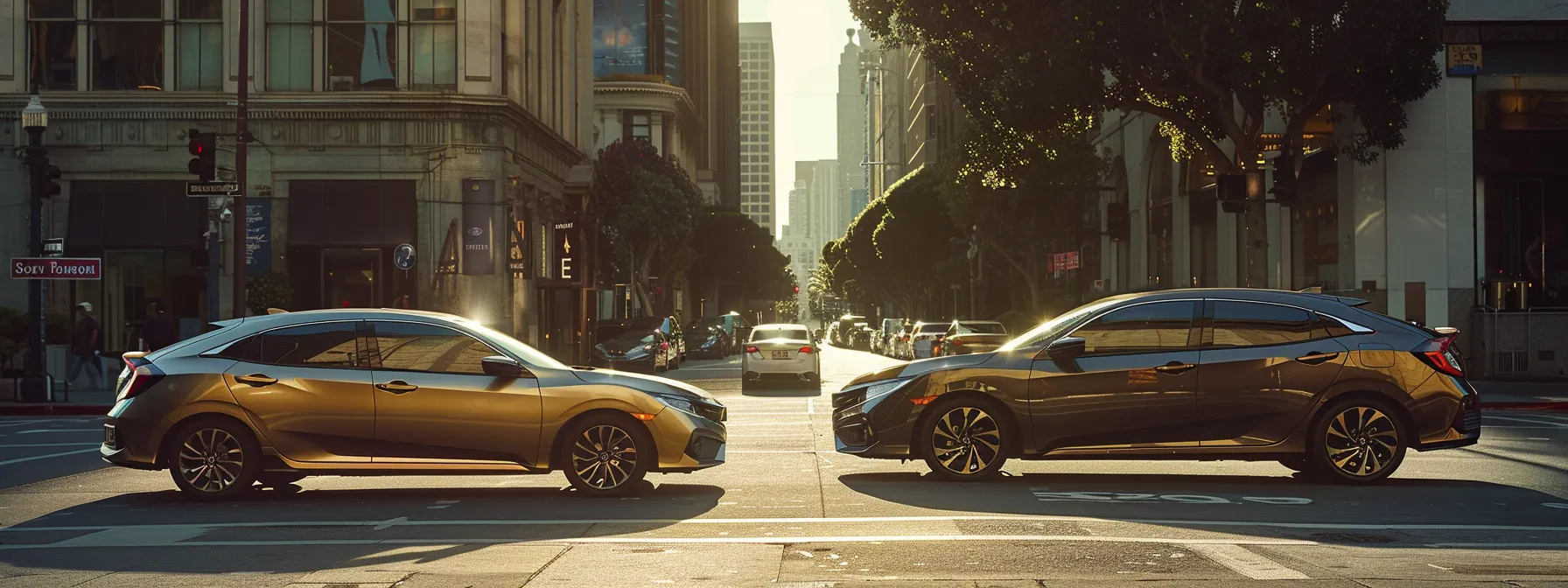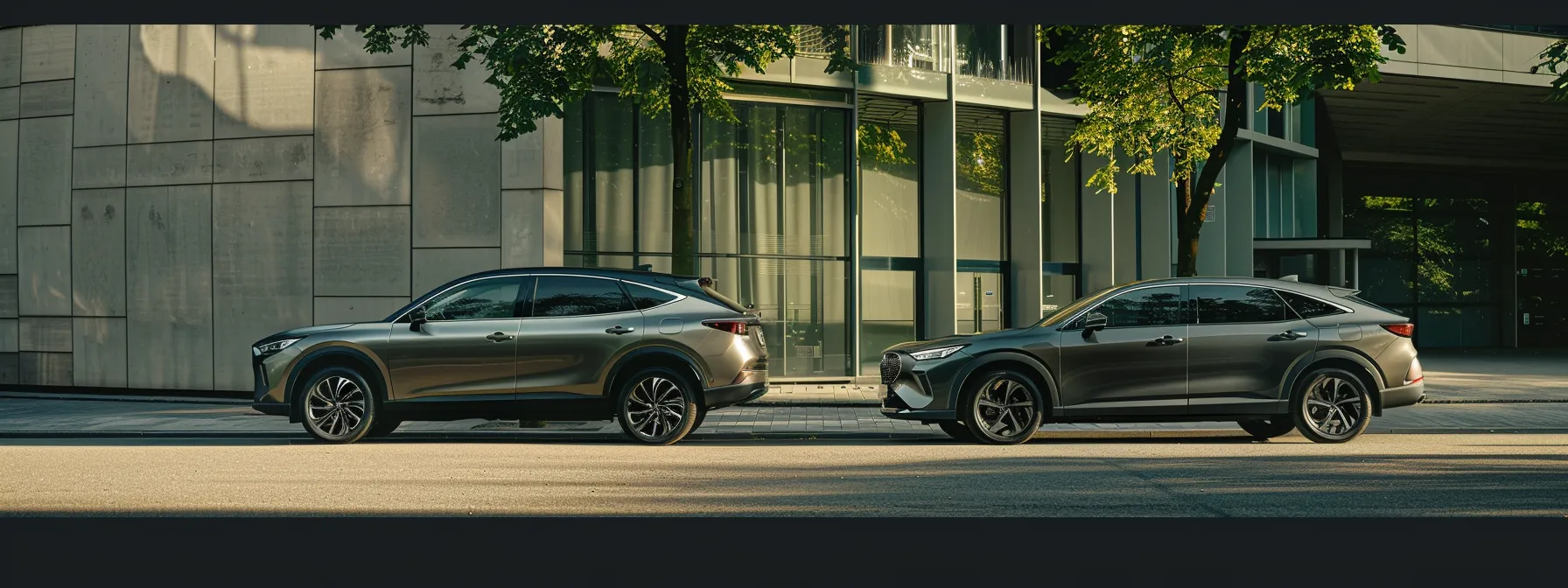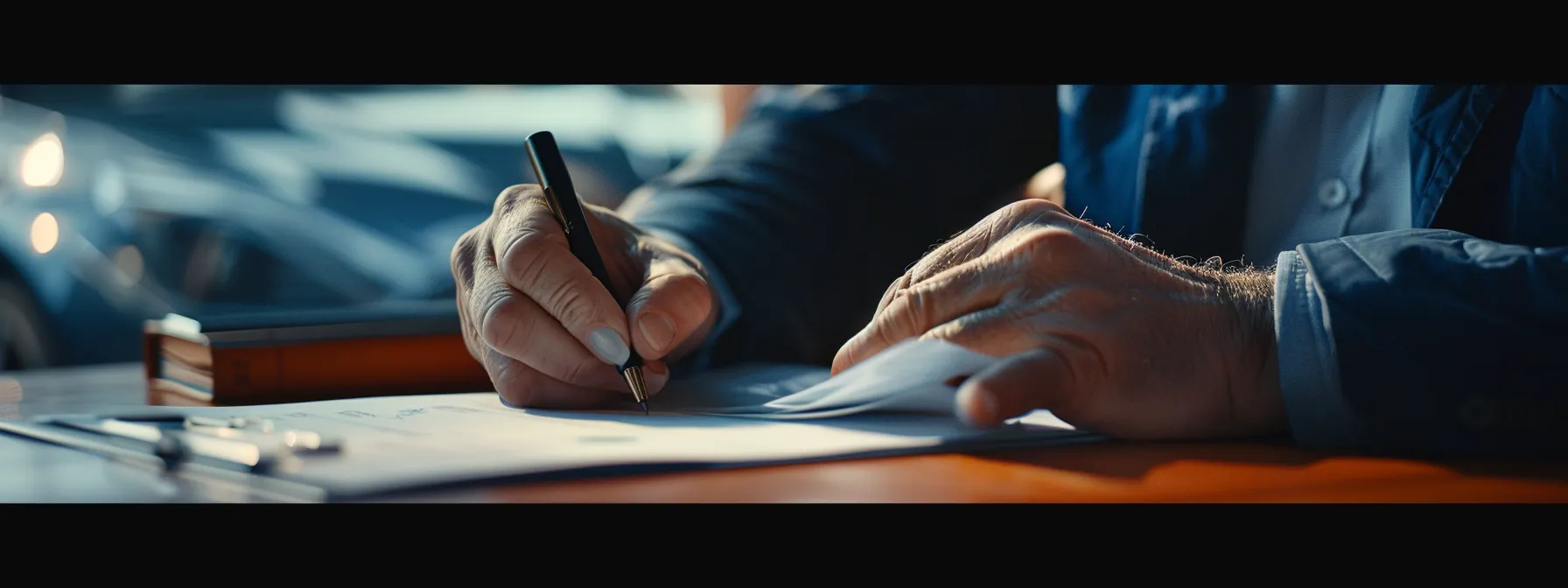Are you feeling overwhelmed by the thought of buying your first car? You’re not alone. Many first-time car buyers face confusion when navigating the automotive industry. In this post, I’ll provide essential tips to help you determine your budget, research car models, and understand the buying process. By following these tips, you’ll feel more confident as you approach ownership, making it easier to negotiate the best deal and avoid common pitfalls. Let’s simplify the process and help you drive away happy!
Key Takeaways
- assess your finances to set a realistic car-buying budget
- get pre-approved for a loan to simplify the buying process
- consider total ownership costs beyond the car’s sticker price
- research models and owner feedback for informed vehicle choice
- take thorough test drives to evaluate performance and comfort
Determine Your Budget and Financing Options

First, assess your financial situation to understand what you can afford. It’s important to explore different financing methods, as this gives you confidence in your purchase. Additionally, consider total ownership costs, including insurance and maintenance, to avoid surprises later. Lastly, getting pre-approved for a loan can simplify the buying process, especially if you have a good credit history. This ensures you have options when you find your perfect vehicle, like reliable Ram trucks or other dependable transports.
Assess Your Financial Situation
When I first considered buying a car, I knew assessing my financial situation was key. Start by evaluating your personal finance—what income do you have, and what expenses do you need to cover? This helps you determine a realistic budget for your car. Remember to factor in costs like insurance, maintenance, and potential theft that could impact your overall expenses. Each little detail matters when setting up your budget; you don’t want surprises after you drive your new pickup truck off the showroom floor.
Once I had a better grasp of my finances, I created a simple list of what I could afford. It was easy to focus on the initial cost of the vehicle, but I also needed to think about monthly payments if I chose financing. I found it helpful to consider various financing options to see what worked best for my needs. By taking this approach, I felt more confident when stepping into the dealership, knowing exactly what I could commit to for my new vehicle:
- Evaluate your monthly income and expenses.
- Factor in insurance, maintenance, and other ownership costs.
- Consider financing methods and how they fit your budget.
- Get pre-approved for a loan if possible.
Explore Different Financing Methods
When I first considered financing my vehicle, I quickly learned about the importance of making a down payment. A larger down payment can significantly reduce your monthly payments and overall loan interest. I found that even a few thousand dollars could help me secure better terms, especially on popular models like the Honda Odyssey, which can be a great choice for families.
Next, I explored various financing methods available through different financial institutions. I discovered that some banks and credit unions offer competitive rates, while dealerships often have promotions or special financing options. By comparing these offers, I could find the best fit for my budget and understand what would work best for my needs as a consumer. This step really made a difference in feeling confident about my buying decision, knowing I had the right financing in place.
Consider Total Ownership Costs
When I was buying my first van, I realized that considering total ownership costs was just as crucial as the initial purchase price. As buyers, we often focus on what we’ll pay at the dealership, but the costs don’t stop there. I started thinking about expenses like insurance, fuel, maintenance, and registration fees that can pile up over time and impact my budget.
Understanding my total ownership costs helped me make informed decisions. For instance, choosing a vehicle with better fuel efficiency not only reduced my fuel expenses but also contributed to lower insurance rates. I made it a point to factor these ongoing costs into my budget so I could enjoy my new van without financial surprises later on. Here’s what I focused on:
- Insurance premiums and coverage options.
- Regular maintenance and repair costs.
- Fuel efficiency and fuel expenses.
- Registration and taxes associated with ownership.
Get Pre-Approved for a Loan
Getting pre-approved for a loan was one of the best decisions I made when buying my first vehicle. It helped me understand how much cash I could comfortably spend without stretching my budget. I also learned that once I had my vehicle identification number (VIN) handy, I could provide lenders with specific details about the car I wanted, which helped expedite the process. Plus, a solid credit score can lead to better loan terms, saving me money in the long run.
By securing pre-approval, I felt much more confident walking into the dealership, as I was aware of any fees or interest rates associated with my financing options. This clarity allowed me to focus on finding the right car, knowing I could negotiate better deals with a lender’s support. With pre-approval, I also had the peace of mind that came from comparing different offers, putting me in a much stronger position to make a savvy decision on my purchase.
Now that you’ve set your budget and explored financing, it’s time to look at what’s out there. Understanding different car models and their features will help you make a choice that fits your needs perfectly.
Research Different Car Models and Features

Research Different Car Models and Features
When I began my search for the right truck or SUV, identifying my needs and preferences was the first step. I knew I had to compare new and used vehicles like the Ford Escape and investigate their reliability and safety ratings. I also made it a point to read reviews and owner feedback to understand how each model holds up over time, especially after potential accidents. With this knowledge, I felt more empowered to make an informed choice about which vehicles would best suit my lifestyle.
Identify Your Needs and Preferences
When I started my journey to buy my first car, I knew that identifying my needs and preferences was essential. I took a moment to reflect on my daily routine and what I truly needed from a vehicle. For example, if you often transport friends or family, a spacious option like a Ram pickup might be the best fit. Or if you commute regularly, consider a fuel-efficient sedan that aligns better with your budget and income. Understanding how a vehicle will serve you makes the decision process smoother and more rewarding.
Next, I realized that I needed to assess my financial situation carefully. I didn’t want to end up in debt due to an impulsive purchase. So, I factored in my monthly budget and looked up the market value of different models to ensure I was making a smart choice. Creating a list of must-have features versus nice-to-haves further clarified my preferences:
- Budget-friendly options that won’t strain my income.
- Reliability and safety features for peace of mind.
- Size and space to accommodate my lifestyle.
- Fuel efficiency to save on ongoing costs.
Compare New and Used Vehicles
When I began comparing new and used vehicles, I quickly realized that each option has its own set of benefits and drawbacks. New cars often come with the latest features, a full manufacturer’s warranty, and the assurance of reliability from the start. However, as a first-time car buyer, I also found that used vehicles could offer significant savings and a broader selection of brands to consider, which helped me find a model that fits my budget without sacrificing quality.
Another important factor I learned was to check the financing interest rates that might come into play with new versus used cars. Often, new cars have dealer promotions that include lower interest rates, making them attractive despite their higher price tag. On the other hand, used cars can sometimes have higher rates but represent a better overall value for car buyers like me, especially if I choose a reliable model that won’t break the bank in terms of maintenance down the road.
Investigate Reliability and Safety Ratings
When I was searching for my first vehicle, I quickly learned how vital it is to investigate the reliability and safety ratings of different models. I found that looking up ratings from trusted organizations helped me compare options more easily. For instance, the Chrysler Pacifica stood out to me due to its excellent safety features and reliability reports, giving me confidence as I approached my negotiation with the dealership.
Additionally, I made it a point to combine my research with a hands-on approach by scheduling test drives. Getting behind the wheel not only helped me understand how each car felt but also revealed how well they matched my needs. I realized that addressing both reliability and safety before seeking financing through a credit union made the entire buying process much less stressful and more exciting.
Read Reviews and Owner Feedback
Reading reviews and owner feedback was a game-changer for me when I was choosing my first car. I sought out information on specifics like price and fuel efficiency, which helped me understand what expenses I might incur, both upfront and long-term. Hearing directly from other drivers about their experiences gave me insights into reliability and any potential rebates or equity benefits that could come with certain models.
I also found that owner feedback often highlighted things I wouldn’t have considered otherwise, like how a car performs in everyday situations. This perspective enhanced my understanding of which vehicles might fit my lifestyle best. By gathering this information, I felt more equipped to make a decision that would not only meet my budget but would also suit my needs in the long run:
- Gather insights on price and fuel efficiency.
- Understand potential expenses and rebates.
- Consider owner experiences for real-world performance.
- Evaluate how a vehicle retains equity over time.
You know the cars and what they offer. Next, let’s dig into the steps of buying one, so you can make the best choice right from the start.
Understand the Car Buying Process

Understanding the car buying process can help reduce any risk and make your experience smoother. I found it essential to learn about dealership practices and the documents required for purchasing a vehicle. Additionally, checking the vehicle history reports for used cars and being aware of additional fees and charges, including sales tax, helped me make informed decisions about my monthly car payment and leverage my credit effectively.
Learn About Dealership Practices
When I started my car buying journey, I quickly realized that understanding dealership practices was vital. Each dealership has its own approach to selling vehicles, which can affect negotiation and pricing. For example, some dealerships may focus more on leasing options for individuals who prefer lower monthly payments, while others might advertise attractive auto loan rates for buyers looking to purchase outright. Being aware of these strategies allowed me to choose a dealership that aligned with my financing preferences and helped minimize unexpected costs.
Next, I learned the importance of doing thorough research before stepping foot into a dealership. I found that familiarizing myself with the current market value of the car I wanted not only gave me confidence during negotiations but also ensured that I was aware of any additional fees associated with the purchase, be it taxes, destination charges, or service fees. Knowing the details helped me feel empowered, making it easier to ask the right questions and clarify any terms related to car finance that I might not fully understand:
- Research your financing options, including leases or auto loans.
- Understand the dealership‘s approach to pricing and transparency.
- Know the typical fees involved in the buying process.
- Ask questions to clarify terms and agreements.
Know the Documents Required
When I was preparing to buy my first car, I quickly learned that knowing the required documents was crucial. The basic items I needed included my driver’s license, proof of income, and insurance information, which would help streamline the buying process. Having these documents ready not only made things easier at the dealership but also put me in a better position to negotiate effectively when discussing financing options and any extended warranty plans.
Additionally, I found it helpful to understand the potential costs associated with purchasing a vehicle, especially with the rising inflation and interest rate changes. Looking at my budget with these factors in mind allowed me to plan finances around my monthly payments after factoring in the vehicle’s price. Here’s a quick list of essential documents to prepare before heading to the dealership:
- Driver’s license
- Proof of income
- Insurance information
- Vehicle identification number (VIN) for the specific car
- Budget estimates including potential monthly payments
Check Vehicle History Reports for Used Cars
When I set out to buy my first used car, I quickly learned how crucial it is to check vehicle history reports. These reports provide vital information about the car’s past, including any accidents, ownership changes, and potential fraud that could affect my purchase. Knowing that a car had a clean history gave me peace of mind, especially since a car loan is often a significant financial commitment, much like a mortgage.
Beyond just a good deal, checking these reports helps safeguard against hidden issues that could turn into costly repairs later. As a customer, I found that accessing a vehicle history report made it easier to negotiate terms with creditors or lenders, ensuring I understood the true value of the car. By investing time in this research, I felt more empowered and confident in my decision, making my first car buying experience much smoother and satisfying:
- Assess the vehicle‘s accident history.
- Check for title issues or ownership disputes.
- Ensure there are no fraudulent claims against the vehicle.
- Confirm the maintenance records and service history.
Be Aware of Additional Fees and Charges
When I was buying my first car, I quickly learned that there were several additional fees to consider beyond the sticker price. Charges such as inspection fees, dealer processing fees, and registration costs can add up and should be factored into your budget. Understanding these costs early on can help you avoid surprises, especially if you’re eyeing a reliable Chrysler or any other brand. It’s always a good idea to ask for a breakdown of these fees before finalizing your purchase, ensuring you’re fully informed about your financial commitment.
Another essential aspect to keep in mind is the Truth in Lending Act, which requires lenders to provide clear information about loan terms and fees. This transparency can help you understand the overall cost of financing your vehicle. I found that reading Customer Reviews on dealership practices also provided valuable insights into how transparent they are about additional charges. By staying informed about these aspects, I felt much more prepared and able to negotiate confidently during my car buying experience.
You’ve learned the steps to buy a car, but the journey doesn’t end there. The most telling moment comes when you take the car for a test drive; it’s where you feel the road and hear the engine.
Take a Thorough Test Drive
To truly understand a vehicle’s fit for your needs, I always recommend taking a thorough test drive. Start by scheduling appointments in advance, so you can dedicate enough time to explore various options with Indy Auto Team. Inspect the vehicle inside and out to ensure it meets your standards. Then, evaluate its performance in different conditions, paying attention to handling and comfort. Don’t hesitate to ask questions about features and functionality, as this will help you feel confident as you search to “Find My Car” among quality Pre-Owned Cars.
Schedule Appointments in Advance
When I began my car buying journey, I quickly learned the importance of scheduling appointments in advance for test drives. This simple step helped me ensure that the specific vehicles I wanted to test were available when I arrived at the dealership. By planning ahead, I could also allocate enough time to fully explore the vehicles without feeling rushed, allowing me to make a more informed decision during my first-time car buying experience.
Additionally, scheduling a test drive helped me build rapport with the sales team at Indy Auto Team. I found that when I communicated my preferences and needs upfront, they were more inclined to assist me and provide valuable insights about the cars I was interested in. This approach significantly enhanced my overall experience, as I felt supported throughout the process. Here’s how I made the most of my appointments:
- Contact the dealership a few days in advance to schedule a test drive.
- Specify the make and model you want to test drive.
- Ask about the availability of other vehicles that might interest you.
- Consider visiting during less busy times to have more personalized attention.
Inspect the Vehicle Inside and Out
When I stepped into a vehicle for a test drive, I made sure to inspect it thoroughly inside and out. I checked for general cleanliness and signs of wear that could indicate how well it had been cared for. Features like the condition of the seats, the functionality of the air conditioning, and even the quality of the sound system mattered to me, as I wanted a comfortable driving experience. Little details like this can significantly affect your comfort on the road, so don’t overlook them.
While inspecting the exterior, I paid close attention to the paint quality and any signs of rust or dents. These could signal underlying issues or potential repairs down the line. I also checked the tires for tread depth and even wear, as these factors can impact handling and safety. Taking the time to look over the vehicle carefully made me feel much more confident about my decision, ensuring I chose a car that would serve me well for years to come.
Evaluate Performance in Various Conditions
When evaluating a car’s performance during a test drive, I made it a point to take the vehicle through different driving conditions. I found it helpful to test how the car handled on the highway and in stop-and-go traffic to see how it performed under various speeds. This approach gave me a realistic sense of how the car would fare in my daily commute and whether it would fit my lifestyle.
Additionally, I paid close attention to how the vehicle reacted when turning and braking, as well as its stability on uneven roads. I appreciated how some cars, like certain SUVs or trucks, offered a smoother ride even on bumpy surfaces. This experience gave me clarity on what types of vehicles met my needs, ensuring I chose a car that would provide comfort and reliability for years to come.
Ask Questions About Features and Functionality
During my test drive, I made it a priority to ask detailed questions about the features and functionality of the vehicle. Understanding important aspects like the infotainment system, safety features, and additional tech helped me determine whether the car aligned with my lifestyle. For example, I wanted to know how user-friendly the navigation system was, especially since I rely on it for daily commuting, and whether the safety features, like lane assist or adaptive cruise control, truly functioned well in different driving conditions.
Being proactive with my questions not only cleared up any confusion but also showed the sales team that I was serious about making an informed decision. I found that asking about warranty coverage for specific features gave me peace of mind, knowing I wouldn’t face unexpected costs shortly after buying my vehicle. Here are some key questions I considered asking during my test drive to ensure I got the most out of my experience:
- What are the key safety features, and how do they operate?
- How does the infotainment system integrate with my smartphone?
- What is the warranty coverage on these features?
- Can you show me how to use the climate control and other conveniences?
As you align the car with your driving style, the real work begins. It’s time to negotiate a deal that meets your budget and sets you on the road with confidence.
Negotiate the Best Deal

Negotiating the best deal is key when buying your first car. Start by researching market prices and invoice costs to know what a fair price looks like. Be prepared to walk away if the deal doesn’t meet your budget. Understanding trade-in values, along with available incentives and discounts, can also significantly impact your final price. Let’s dive into these essential strategies.
Research Market Prices and Invoice Costs
When I was ready to negotiate for my first car, I knew that researching market prices and invoice costs was essential. I spent some time looking at various online resources to find out the fair market value of the specific models I was interested in. Knowing this information not only empowered me during negotiations but also helped me set realistic expectations about what I could afford, making the whole process less stressful.
Understanding invoice costs was another critical step for me. I learned that this figure represents what the dealer paid for the vehicle, so knowing it could give me an idea of how much wiggle room I had in my negotiations. By being aware of both the market price and invoice cost, I felt much more confident walking into the dealership and was better equipped to find a deal that suited my budget.
Be Prepared to Walk Away
When I found myself in negotiations for my first car, I quickly realized that being prepared to walk away was a valuable strategy. I made a list of the maximum price I was willing to pay and stuck to it, even when the sales team tempted me with enticing offers. This approach not only helped me avoid overspending but also gave me the confidence to step away if the terms didn’t meet my budget, allowing me to seek better options that truly fit my financial plan.
Walking away from a deal can feel daunting, but it’s essential to remember that plenty of other vehicles are out there. For instance, while I was eyeing a specific SUV, I reminded myself that if it didn’t work out, I could find similar models that better aligned with my needs. This mindset shifted my focus from desperation to empowerment, making the process of negotiating feel more like a partnership rather than a struggle. Knowing I had choices kept me grounded and allowed me to make a smarter decision in the long run.
Understand Trade-in Values
Understanding trade-in values is crucial when negotiating the best deal for your first car. When I decided to trade in my old vehicle, I made sure to research its market value beforehand. Knowing the true worth of my trade-in not only helped me in negotiations but also ensured I received a fair offer from the dealership, maximizing my budget for the new car.
I also learned the importance of cleaning and maintaining my trade-in before taking it to the dealership. This simple step can significantly impact the offered price. A well-presented vehicle shows that it’s been cared for and can give the dealer more confidence in its value, which aids in securing a better deal on my new purchase:
- Research market values for your trade-in.
- Present your trade-in in good condition.
- Negotiate based on fair valuations.
- Use your trade-in as leverage for your new purchase.
Discuss Incentives and Discounts
When I was negotiating for my first vehicle, I quickly learned that discussing incentives and discounts could significantly impact my final price. Many manufacturers and dealerships offer various promotions, such as cash back or low-interest financing, which can create substantial savings. Researching these options ahead of time helped me identify any current deals available for the vehicles I was interested in, allowing me to make a more informed decision when negotiating.
Additionally, I found that smaller incentives, such as loyalty programs or trade-in bonuses, could also enhance my overall deal. These extras often get overlooked, so I made sure to ask the sales team about any current offers that might apply to my purchase. The more informed I was about available incentives, the better positioned I felt to negotiate effectively. Here’s a quick list of what you should keep in mind when discussing incentives and discounts:
- Research manufacturer incentives like cash back or low-interest financing.
- Ask about loyalty programs for returning customers.
- Inquire about trade-in bonuses available for your old vehicle.
- Stay informed about seasonal promotions or discounts on specific models.
You’ve struck a deal that feels right. Next, it’s time to seal the purchase and consider what comes after that new car rolls off the lot.
Finalize the Purchase and Essential Aftercare

Once you’ve found your perfect vehicle, it’s time to finalize the purchase and ensure you’re well-prepared for car ownership. I always recommend reviewing the contract carefully before signing, arranging for insurance coverage, and understanding any warranty and service agreements. Additionally, planning for future maintenance and upkeep will help you stay on track with your vehicle’s care. Let’s dive into these important steps.
Review the Contract Carefully Before Signing
When it came time to finalize my vehicle purchase, I made it a point to review the contract carefully before signing. I found that taking this step was crucial in understanding not only the total costs involved, like taxes and fees, but also the terms of my financing agreement. This strategy ensured I knew exactly what I was agreeing to and helps avoid surprises down the road, like unexpected charges or extended warranties I didn’t actually want.
During my review, I focused on any sections that referred to payments and interest rates, as these elements directly affected my budget. I also made sure to verify that all the details we discussed at the dealership were accurately reflected in the contract. By doing this, I felt more secure and informed about my purchase, which gave me even greater confidence as I finalized my car buy and drove off with my new vehicle.
Arrange for Insurance Coverage
After finding the right vehicle, one of my top priorities was arranging for insurance coverage before I drove off the lot. I learned that it’s essential to have your insurance in place to legally drive your new car and protect myself against any unforeseen issues. I contacted a few insurance providers to compare rates and coverage options, ensuring I chose a policy that fit my budget while still providing comprehensive protection.
During this process, I discovered that many insurers offer discounts for safe driving, bundled policies, and even for certain features in my vehicle, like anti-theft systems. I made sure to ask about these possible savings, which helped lower my overall costs. By taking the time to secure adequate insurance coverage, I felt much more confident and prepared for my new adventure on the road, knowing I had protection in place for my recent investment.
Understand Warranty and Service Agreements
Understanding warranty and service agreements was a significant part of my car buying experience. I learned that warranties can vary widely between manufacturers and dealers, so I made it a point to ask about coverage options. Knowing whether my vehicle came with a powertrain warranty or a comprehensive plan helped me feel more secure about my investment, as I could rely on assistance for repairs if needed.
Additionally, I took the time to review the service agreements offered by the dealership. These agreements often cover routine maintenance, which can save you money over time. By opting into a service package, I ensured that I would receive essential care for my vehicle, reducing potential headaches down the line. Having these agreements in place added peace of mind as I embarked on my journey as a new car owner.
Plan for Future Maintenance and Upkeep
Planning for future maintenance and upkeep is a vital part of my car ownership journey. I realized that keeping up with regular maintenance can extend the life of my vehicle and help avoid costly repairs later on. I made a checklist for scheduled services like oil changes, tire rotations, and brake inspections to keep track of everything needed to maintain my car’s performance.
Additionally, I found it helpful to familiarize myself with the car’s manual, which provided insights into maintenance schedules and recommended service intervals. By understanding what my vehicle required, I felt more in control of its upkeep. Setting aside a small budget each month for routine maintenance became a part of my financial planning, ensuring I wouldn’t be caught off guard when service time arrived:
- Create a checklist for regular maintenance.
- Familiarize yourself with the car’s manual.
- Set a budget for routine servicing.
Conclusion
Navigating the car buying process for the first time can be overwhelming, but understanding essential tips can greatly ease the journey. By assessing your budget, exploring financing options, and researching various car models, you empower yourself to make informed decisions. Engaging in thorough test drives and negotiating effectively enhances your chances of securing a deal that fits your needs and finances. Ultimately, these strategies not only prepare you for a successful purchase but also set the foundation for a rewarding car ownership experience.
Recent Posts

Honda Civic vs Toyota Corolla: Ultimate MPG Comparison
Are you trying to decide between the Honda Civic and Toyota Corolla for your next car? Both models are known for their reliability and fuel efficiency, but which one truly offers better miles per gallon (MPG)? In this comparison, I’ll break down the official MPG ratings, real-world performance, and the engineering behind their fuel efficiency. [...]

SUV vs Sedan: Analyzing Depreciation Rates Comparison
When choosing a men’s wedding ring, many people overlook titanium, assuming it lacks the elegance of platinum or gold. However, titanium men's rings offer unmatched durability, lightweight comfort, and a modern aesthetic that aligns with today’s wedding ring trends. In this article, you will discover the benefits of titanium wedding bands, including their hypoallergenic properties [...]

Guide to Successful Bad Credit Auto Financing
Are you struggling to finance your car due to bad credit? You're not alone. Many people face challenges when seeking auto financing, but there are options available. In this guide, I will cover how to understand your credit score, explore bad credit auto financing options, and navigate the application process successfully. By the end, you'll [...]
Find the car you need.
At Indy Auto, we are committed to providing you with the best solutions tailored to your driving needs. Whether you’re navigating city streets or cruising down the highway, our dedicated team ensures that you have access to top-quality vehicles, parts, and services that enhance your driving experience.
